
Ethnic villages, cultural icons of Ba Be Lake
- on Feb 7, 2020 By: BN
Known to be a green lung of great importance in North Vietnam, Ba Be National Park is a haven of peace where it is good to enjoy a memorable excursion in the wilderness of Bac Kan province. Due to the great biodiversity offered by Ba Be Lake and other sites of interest in the surroundings, the discovery of its population allows us to approach cultural icons in their varied and remarkable states.
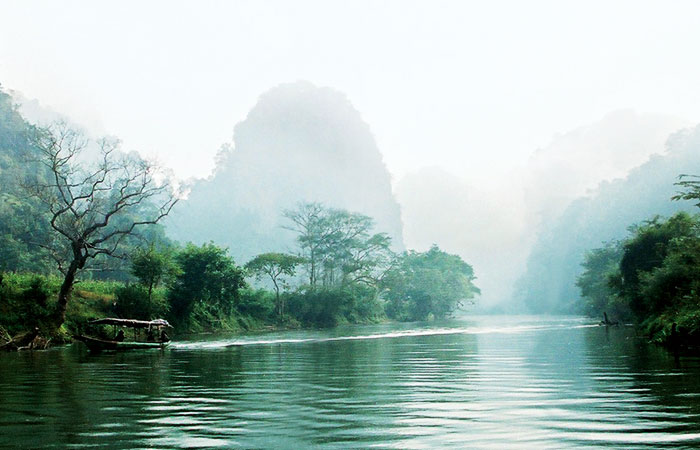
Among more than three thousand inhabitants representing five ethnic groups, the Tay, the majority, were the first to settle there, more than 2000 years ago. The presence of the Nung and Dao tribes originated from installations around 1000 years ago, while that of the Kinh and Hmong was more recent.
The ethnic groups living in the vicinity of Ba Be National Park are grouped into thirteen villages, some of which are home to a single minority. If the Tay live further down the springs and streams or at the foot of the mountains, the Dao choose the mountainside to build their home. Known for natural isolation, the Hmong shelter is often set up at high altitude.
The Tay and Nung ethnic groups around Ba Be Lake
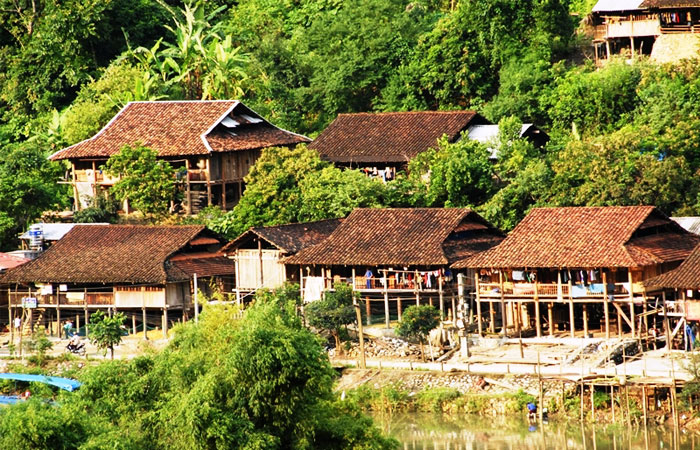
Pac Ngoi village is reflected in the water of Ba Be lake
Belonging to the Thai language group, the Tay and Nung present cultural similarities in their way of life and habitation. Based on 4 or 7 stilts, their traditional house consists of two spaces with the top reserved for everyday life including living room, kitchen and bedroom. The underside is used for stock and pets. The roof normally includes two or four sides of thatch, palm leaves and tiles. To date, there are also houses on soil which rub shoulders with houses on stilts in the villages of Tay and Nung. The Tay people living in the northern mountains have practised, among other things, flooded rice growing in the valleys bordering rivers for generations.
A highlight of rural life is marked by the ancestral festival "Long Tong", or the 'Descent to the fields'. This is an opportunity to come together to close a harvest by showing recognition for the crop genies, hoping for a good new harvest and health for the villagers.
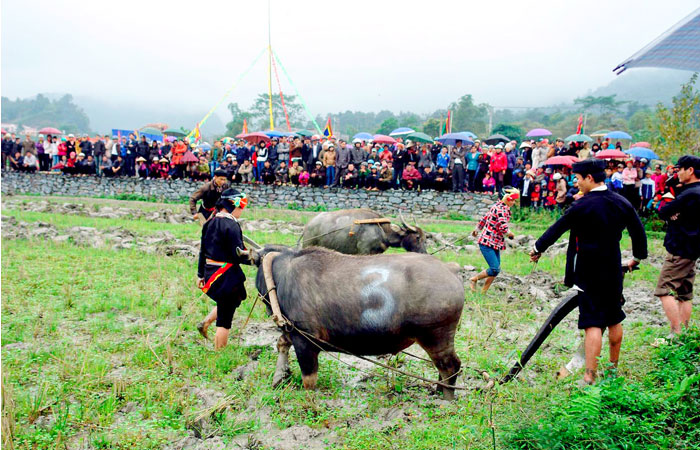
The "Long Tong" festival held on the 10th of the 1st lunar month attracts many locals and visitors who are enthusiastic about a multitude of folk entertainment. After a gourmet tour of local dishes, you will enjoy watching a whole range of traditional games such as canoe competitions, ox fighting, nem con or throwing fabric balls…
The Tay people on the shores of Ba Be Lake also make a living from farming and fishing. The canoe, a fishing tool typical of these inhabitants, also becomes a familiar image that one encounters again and again on an excursion on the lake.
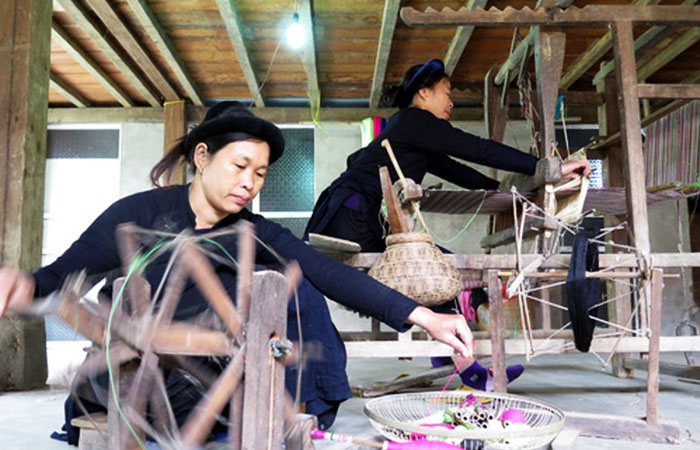
Tay women, on the other hand, are admired by very beautiful handicrafts. Upon entering Pac Ngoi village, you will discover their ancestral weaving craft which is, without doubt, the largest and most complicated of its people in Vietnam. A good woman must be a good weaver or embroiderer as the desired custom of the Tay. The brocatelle such as clothing accessories, canvas bags, portages, curtains is the testament to their skills and they are also a gift between lovers or at a wedding.
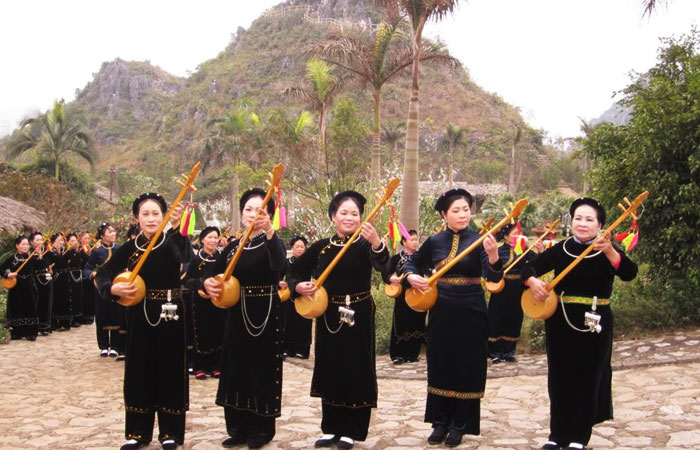
In terms of traditional music, the Tay created their own musical instrument "dan tinh" which, with the Then singing classified as national intangible cultural heritage, quickly evolved during the 15th century. They play, first of all, a preponderant role in the spiritual life of the Tay and Nung by accompanying a number of rites and customs, from funerals to marriage.
The Dao and Hmong ethnic groups in Ba Be
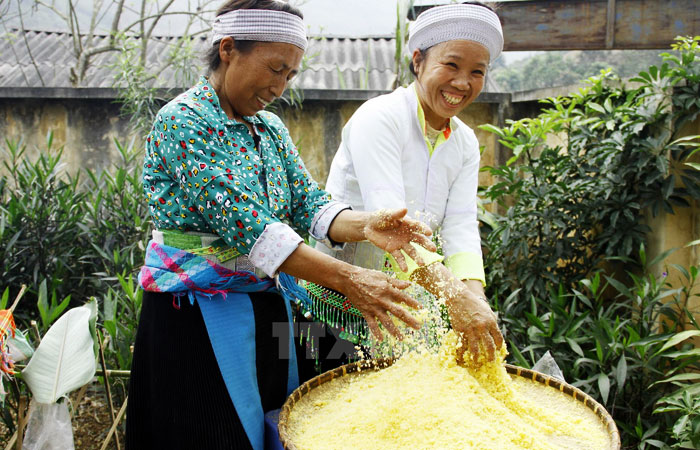
Originating from the same language group, the Dao and Hmong are distinguished by several culturally similar characters. The Hmong house in Ba Be is built on land and, by their strong autonomy, located further away from others. There are three subgroups, namely White Hmong, Black Hmong and Green Hmong who mainly cultivate corn, the first ingredient in their daily meals. Those who have visited a Hmong family must remember the image of a woman or girl spending hours grinding corn to make the "men men". This most popular Hmong dish is a tasty experience to try during your visit to a mountainous northern market.
The other corn speciality to try is, according to hikers in Ba Be, corn alcohol which is particularly appreciated by the Dao. These include the corn alcohol produced by Khua Quang village which, with unsuspected quality and particular taste, is prized in other regions as a pride of the Ba Be district.
Related articles:
>> Ba Be Lake, a green jewel in North Vietnam
Comment
Other Blog
Categories
Latest News
on 27 Apr, 2023      
on 15 Apr, 2023      
on 28 Mar, 2023      
 Español
Español Français
Français






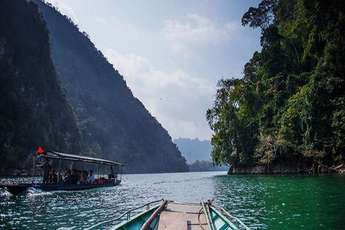
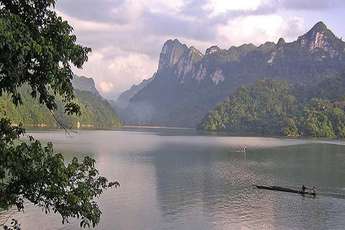
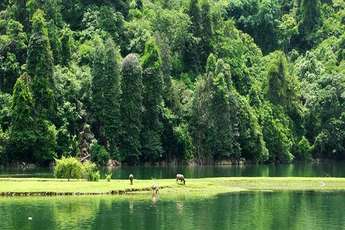
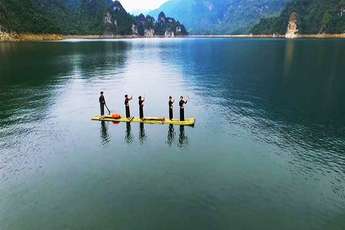
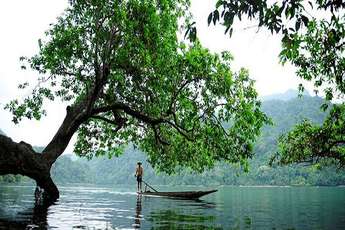







F
on Jan 3, 2024Igor Mozetic
on Apr 8, 2023Ira Beale
on Feb 10, 2023Phạm Phú Toàn
on Jan 28, 2023Max Stover
on Jan 11, 2023